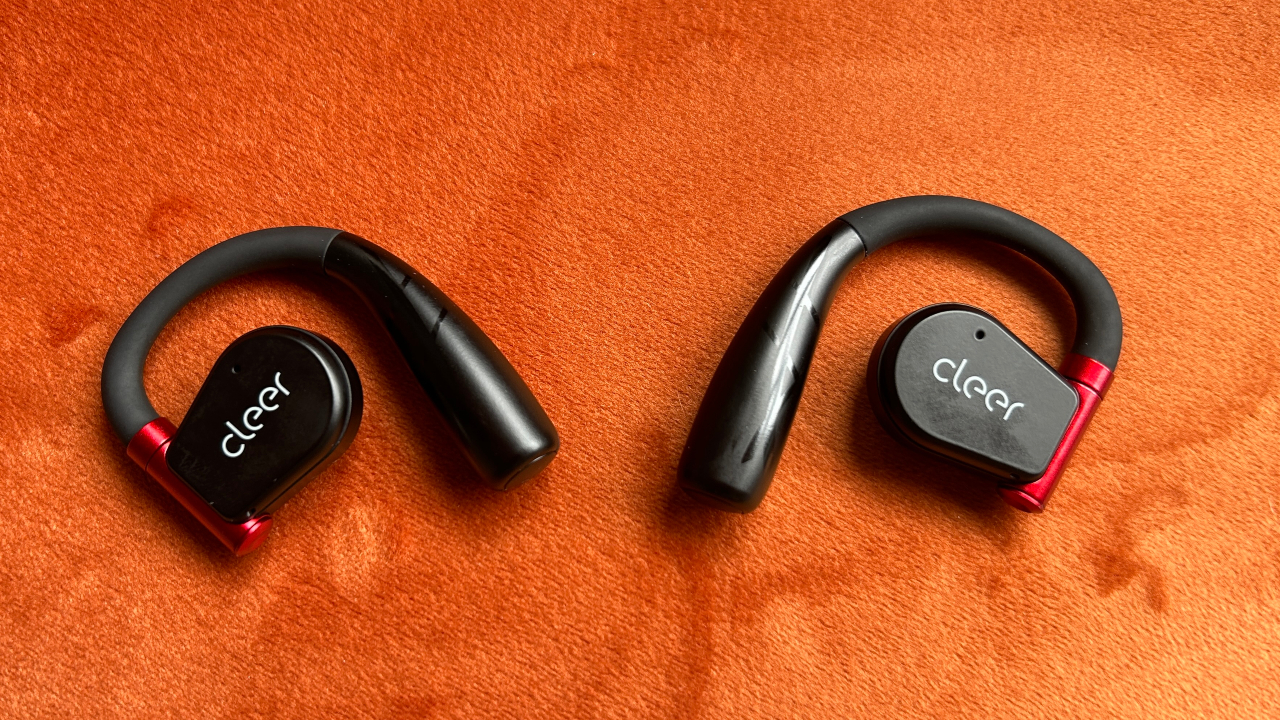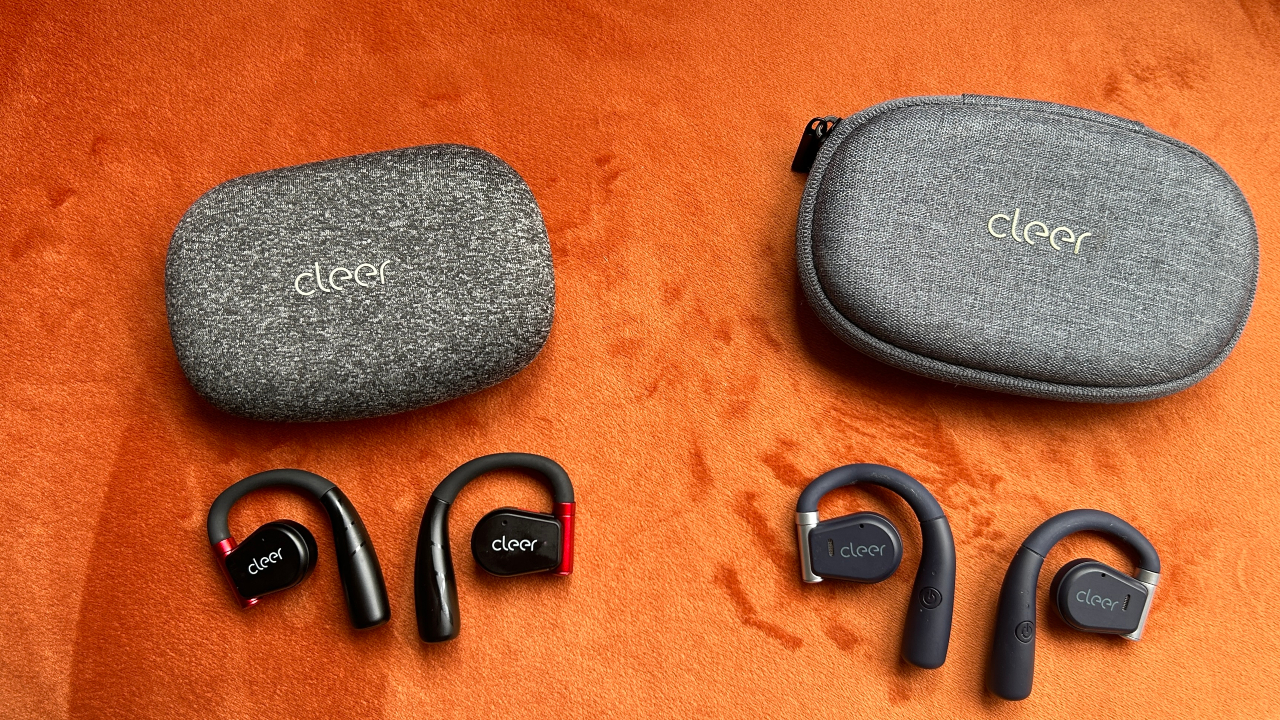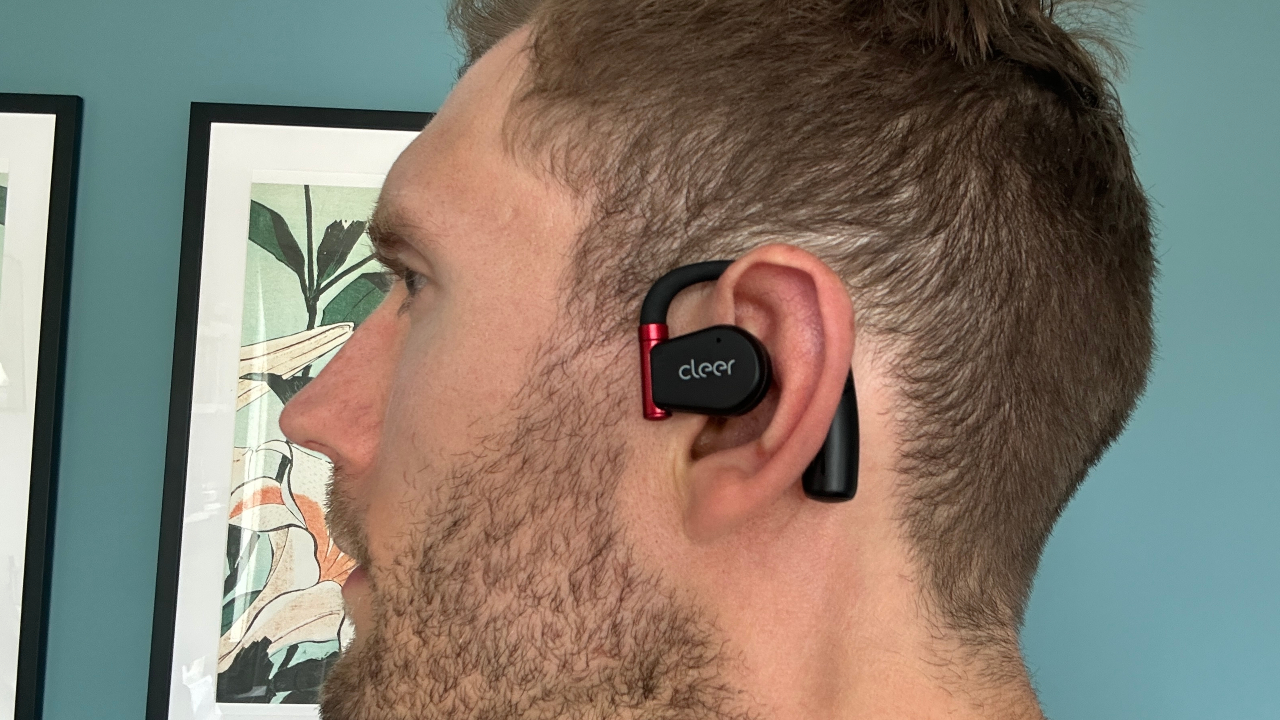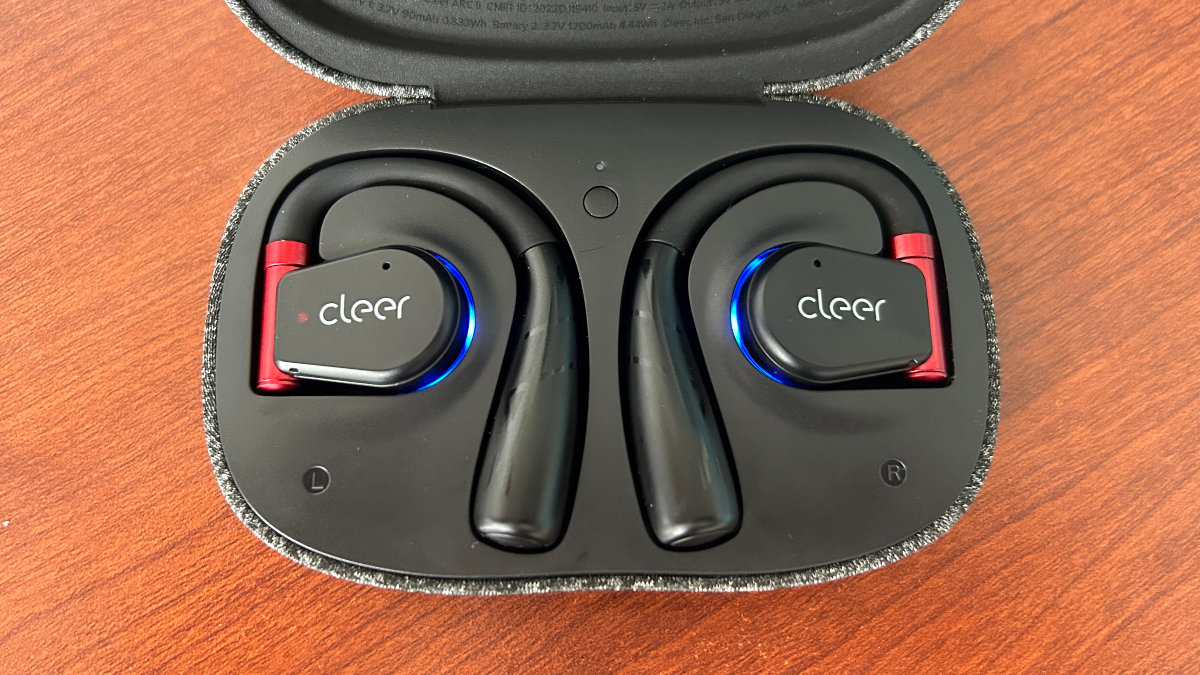Our Verdict
The Cleer Arc II Sport open headphones offer a winning combination of superb sound quality and awareness, and their battery life is boosted by a case that now charges the buds. However, the large buds are less comfortable than rivals like the Shokz OpenFit.
For
- Great sound for open buds
- Case now charges buds
- Open design increases awareness
Against
- Larger than rivals
- Uncomfortable
- Unreliable app connection
You can trust Coach
The original Cleer Arc buds were the first open headphones of their type I’d tested. They hook over the top of the ear for a speaker to rest near the ear canal without blocking it. These open “air conduction” buds rival bone conduction headphones in still allowing you to have an awareness of your surroundings (ie not noise canceling) while sounding better. The approach must work, since even bone conduction titan Shokz has now launched its set of open headphones, the OpenFit.
Cleer has upgraded the Cleer Arc buds for this second version. The case now acts as a charger for the headphones, and the sound and fit have been improved. They are among the best workout headphones you can get based on the sound quality in an open design, though I didn’t find the fit as comfortable as on other buds.
Cleer Arc II Headphones Review: Price And Availability
The Cleer Arc II Sport headphones launched in June 2023 and cost $189 in the US and £199 in the UK. That’s a big jump in price on the Cleer Arc buds, which were $129.99/£129.99, and more expensive than the Shokz OpenFit, which are $180.
Design And Fit

The Cleer Arc II Sport headphones have a similar design to the original Cleer Arc buds, with a hook that goes behind your ear and a hinged panel that “clips” them to your ear. This panel contains the speaker, which rests above your ear canal.
The fit of the buds is more secure, but this comes at a cost. I found that they put pressure on the back of my ears when I wore them for long periods. They’re also quite large and if you wear glasses or sunglasses with them, the hook can get in the way.
The new buds don’t have an on/off button on them, which is annoying at times, since you have to put them back in the case to turn them off. The other control on the buds is a touch panel, which is fiddly to use during exercise without stopping—though for the most part it works well in recognising the right amount of touches and holds to control playback without using your phone.
Head gestures are also used to control the buds. This is not something I’d recommend enabling if you run and cycle with the buds because while doing those sports I managed to repeatedly trigger the controls unintentionally. Outside of workouts, however, the motion controls are useful.
The case on the original Cleer Arc buds didn’t charge them, a criticism that Cleer has acted on with the Cleer Arc II, which comes in a case that contains a battery. It’s also smaller if heavier than the original’s case, though it loses the integrated charging cable for the case itself that I liked on the Cleer Arc.
The battery life of the buds is impressive: eight hours on the headphones, plus another 27 in the case. It’s not the smallest case and won’t be easy to carry in a pocket, but Cleer has put the room to good use with a large battery. The case also has a built-in UV-C light, which reduces bacteria on the buds while they charge.

You can link the headphones to the Cleer+ app to customize the EQ on the buds and check their battery life. However, as with the original Cleer Arc buds, I found that they often failed to connect to the app. The app also shows a step count recorded by the headphones that is delightfully optimistic. On one day it logged 18,000 steps when I’d taken 11,000, many of them when not wearing the buds.
The headphones, while not waterproof, are IPX5-rated, so they can withstand sweat or rain showers during your exercise. They offer multipoint Bluetooth connectivity to switch between two connected devices, and this worked well when moving between my phone and laptop.
Sound Quality

Sound quality is the big strength of the Cleer Arc II headphones compared with other open buds. They have a fuller, more powerful sound than any other open set I’ve tested, clear and bright in the upper ranges while delivering plenty of bass, even if they fall short on this front compared with in-ear headphones.
The volume can go loud, though when running along or cycling on busy roads I struggled to hear some podcasts, and music became more of a background murmur.
You will not be as aware of your surroundings when using the Cleer Arc II buds as when using fully open bone conduction headphones. However, I was comfortable running on quiet roads with them. The headphones find the balance of immersive sound quality and awareness well. Personally, I’d prefer in-ear buds when working out to get better bass and passive noise cancellation, but I was happy using the Cleer headphones.
Battery Life
As with the original Cleer Arc headphones, these new buds last seven hours on a charge, which drops a little if you have the volume close to the max when outside—which I did. Unlike the original headphones, the case for the Cleer Arc II also holds a charge to add another 27 hours of use, which is more than most truly wireless headphones that I’ve tested.
Are The Cleer Arc II Headphones Worth It?
If you want open buds that have the best sound quality available, the Cleer Arc II are the ones to go for. However, they are expensive, and overall I prefer the Shokz OpenFit, which still sound good and have a more comfortable design. The Oladance Open Ear headphones also sound good and have a similar hook design that’s less intrusive than the Cleer Arc II. However, the Oladance buds are even more expensive than the Cleer set.
In-ear buds still sound better. You can get fantastic-sounding in-ear sports headphones for less than the Cleer Arc II, such as the Jabra Elite 4 Active. The passive and active noise cancellation you get with these is ideal for traveling, whereas the Cleer Arc II buds aren’t going to cut it on a noisy train or plane.
Finally, if you’re really concerned about awareness during exercise, then bone conduction technology is still better on this front. The Shokz OpenRun headphones don’t sound as good as the Cleer Arc II, but they are completely open and have a comfortable and secure wraparound fit.

Nick Harris-Fry is a journalist who has been covering health and fitness since 2015. Nick is an avid runner, covering 70-110km a week, which gives him ample opportunity to test a wide range of running shoes and running gear. He is also the chief tester for fitness trackers and running watches, treadmills and exercise bikes, and workout headphones.

